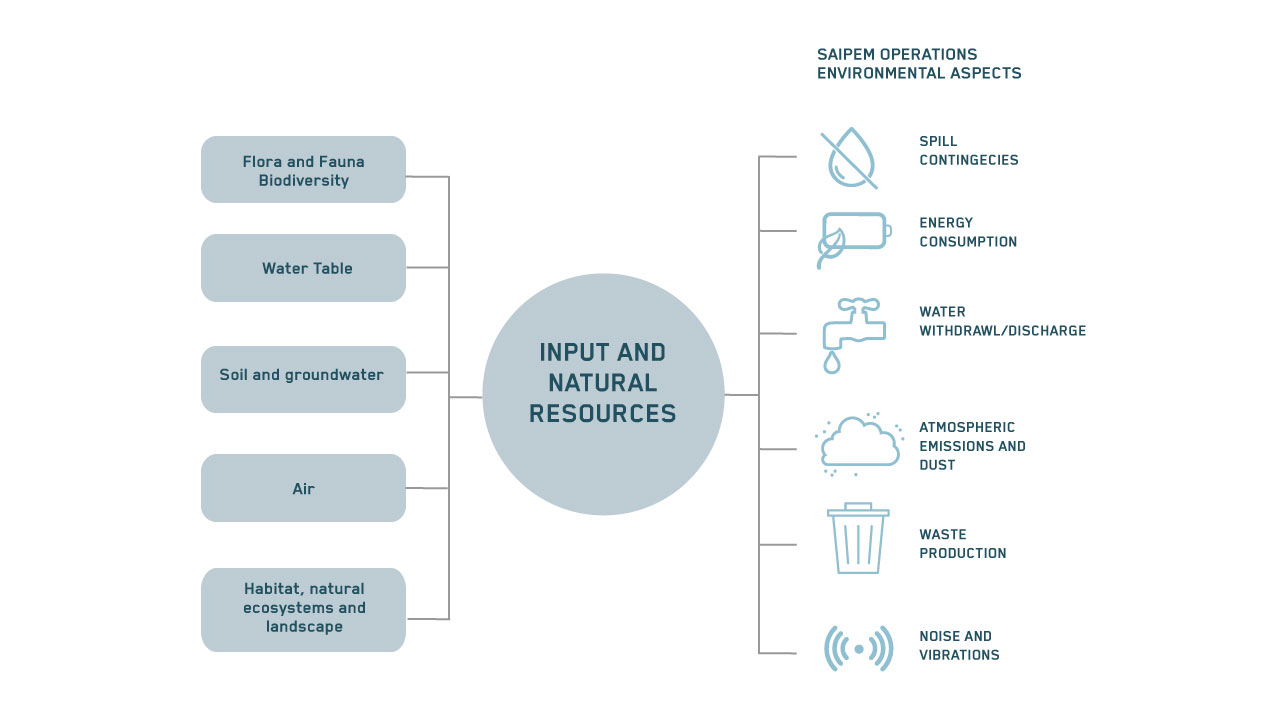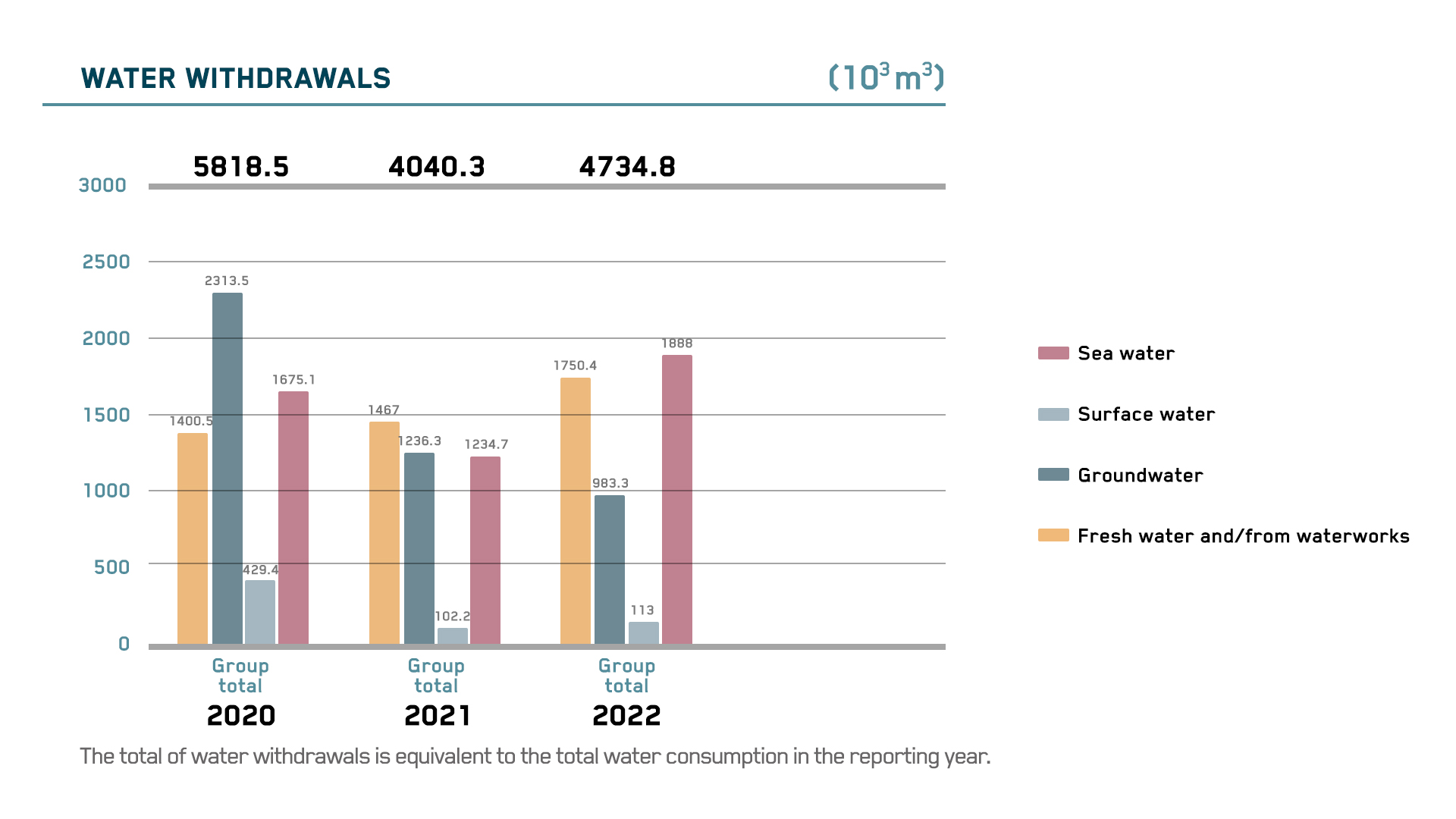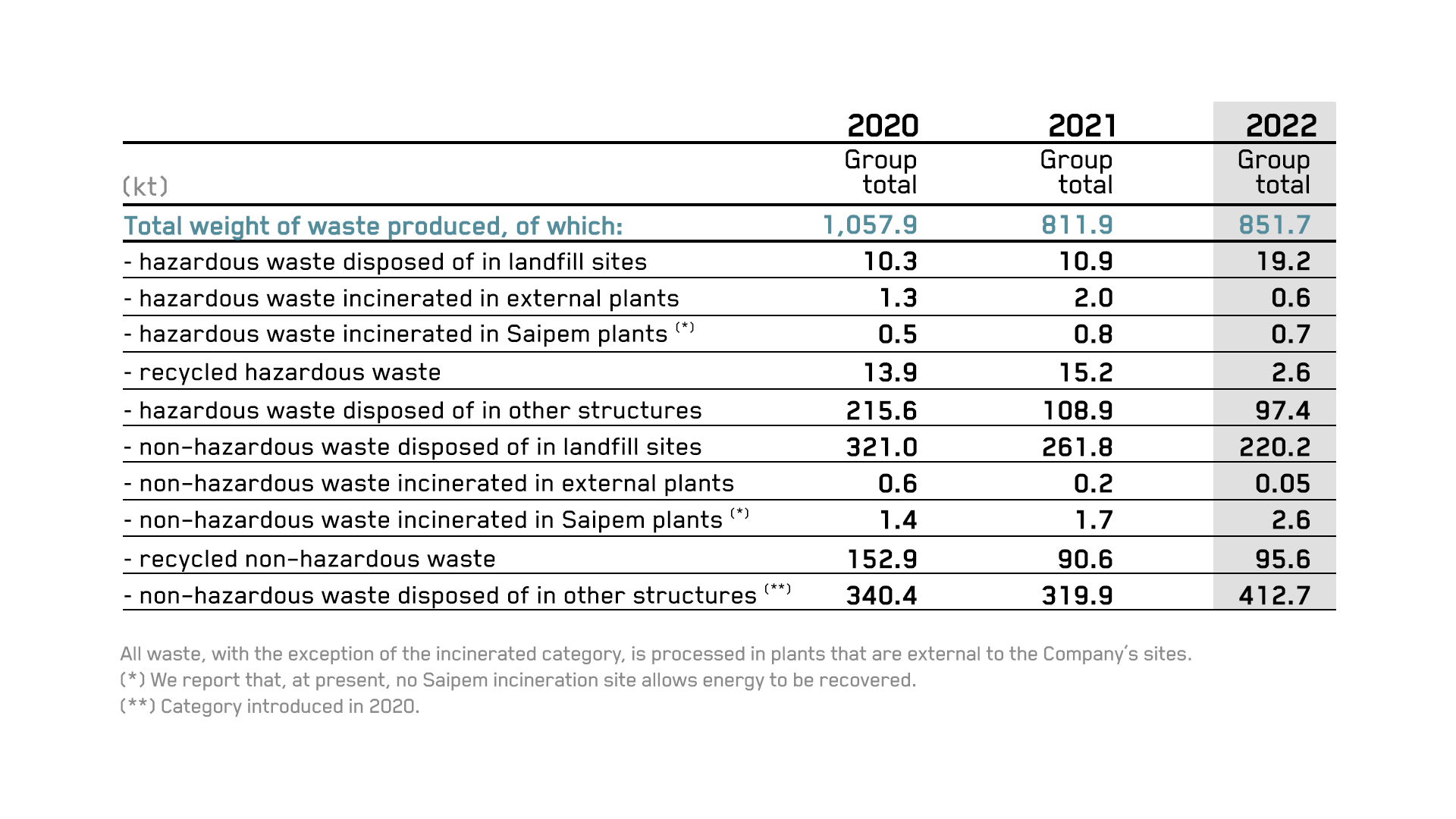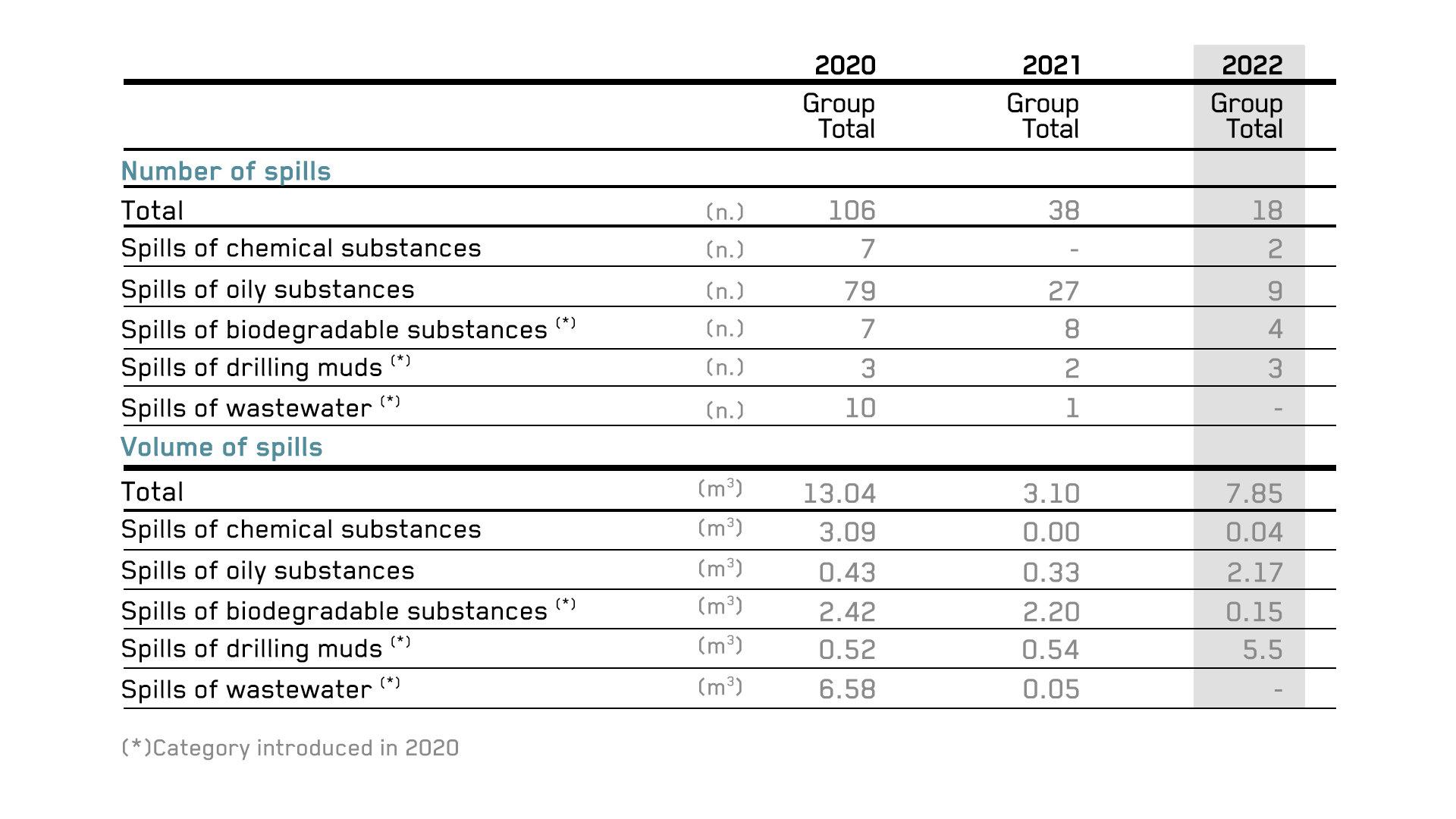The protection and conservation of biodiversity and natural capital are integral elements of our environmental management system implemented during our operations, involving our suppliers, partners and customers.
Saipem is committed to protecting biodiversity and ecosystems, as well as minimising impacts on biodiversity in the areas where the Company operates, based on the responsible management of sensitive areas.
Biodiversity is a determining factor for environmental health, while at the same time, influenced by other environmental aspects. The emissions of greenhouse gases and other pollutants into the atmosphere– such as nitrogen oxides, sulphur dioxide and particulates – low energy efficiency, soil pollution, the use of disposable plastics, waste management and water scarcity are all elements that can have a major negative impact on biodiversity.
Saipem's main focus during this period is the protection of biodiversity at sea. It is implemented by increasing the use of biodegradable oil and reducing disposable plastic on offshore vehicles. Acting to properly manage and keep environmental aspects under control means acting to protect biodiversity.
As a guarantee of our commitment, we have a certified environmental management system in accordance with the ISO standard 14001. Our strategy to mitigate any environmental impact focuses on different aspects, including the conservation of biodiversity, water and waste management and the prevention and response to spills.

Biodiversity
Biodiversity protection and preservation are integrated into Saipem’s projects along their entire life cycle. The objective of Biodiversity conservation in Saipem Projects is achieved thanks to the following types of interventions:
-
Rescue: securing the animal and plant species that are intercepted while a project is executed
-
Protection: implementing measures to mitigate any impacts
-
Awareness: making staff aware of the conduct that needs to be adopted on site
-
And, depending on the requirements and characteristics of individual projects: relocation, reinstatement.
Saipem covers four main roles in favour of biodiversity:
In 2022 we were involved in various projects for the protection of biodiversity and ecosystems. As we operate in vulnerable and diverse natural environments, we always strive to guarantee safe and responsible operations, minimising impacts on biodiversity and protecting the natural environment and local communities.
Details of our biodiversity projects can be found in the 2022 Sustainability Report
pdf - 05-2023
Water
Water is a significant aspect that needs to be monitored and managed.
In fact, we operate in water-stressed areas, where the implementation of a strategy to reduce withdrawals and use it efficiently is a priority. The water reuse, after suitable treatment, is a key activity to minimise water withdrawal.
Greater resilience in the planning and management of water resources is also important to react to the effects of climate change.
Saipem is in fact aware of the importance of the correlation between the use of energy and water. For this reason, Saipem chose to go beyond legal requirements in its water management during 2022.

Chart of Saipem's management of water resources from 2020 to 2022.
Waste management
We adopt a specific waste management system for each type of operating activity, and we share it with the third-party companies we operate with.
Waste management aims to minimise waste, re-use it as material and recycle it after re-use if it cannot be used again. We prioritise hazardous waste through the research and development of new materials, which allow hazardous materials to be replaced with non-harmful alternatives.
Saipem controls the traceability of waste within its sites and ensures that subcontractors do the same, through specific contractual requirements, inspections, audits, etc.

Spill prevention and response
Pollutant spills are one of the most significant environmental issues for our sector. In the case of spills, the prevention of accidents and response actions are an absolute priority
Saipem’s focuses on minimising the risk of spills and implementing emergency mitigation actions, for which we adopt advanced equipment and procedures. We monitor and report “near misses” (missed accidents, or events which under slightly different conditions, could have caused environmental damage) using specific software. These events are subsequently analysed to assess their causes, prevent their recurrence and share lessons learned within the Company.
Here is the information on spills for 2022.
